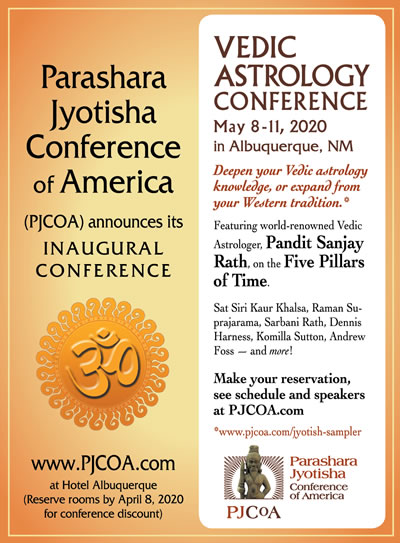No doubt, challenging placements of the planets in a chart are not to be feared for that which they bestow any more than we fear the miracle of creation. Since the fruits of our actions are often undesirable, we need to understand that they are here to help us indulge in doing that which is beneficial. That way we can become individuals secure in our innate nature and follow the righteous path that our innate nature dictates. One of the greatest benefits of astrology is that it helps us become secure in our method of understanding our Dharma and recognizing our place in the world.
Unique to Vedic astrology are the systems of timing events and the fructification of our karma. The systems or Dasa systems begin at the moment of our birth. The placement of the Moon at birth tells us how we are likely to respond to our destiny by the habitual patterns of our mind.
As Vedic astrology is a Lunar based astrology, unlike western astrology which is a Solar based astrology. The astronomical position of the Moon in its Nakshatra or "Lunar Mansion", plays a prominent role in the art of prediction. The ancient Vedic sages looked to the origins of the human soul in the heavens ruled by the Creator. Each of the Nakshatras are ruled by a Vedic deity.
The Nakshatras are utilized in both natal chart analysis and Muhurta, or timing charts. It was the Moon that the ancients first looked to for calculating time. The Moon is the basis of the heavenly clock. Nakshatras are important for their practical value in delineating personal characteristics. A person's Moon represents the most intimate aspect of their nature, their personality or feeling capacity. In Vedic astrology, the Moon is the main indicator of the personality type, much like the Sun sign in Western astrology.
Discovering one's Moon Nakshatra and its qualities is an important tool of self-discovery. The daily motion of the Moon in a specific Nakshatra is important in detailing the specific energy of the day, coloring the day and its potentials for action. Nakshatras are not only limited to defining one's Moon. Each of the planets independent of the Moon is astronomically located in a Nakshatra. There are 28 Nakshatras, spanning 360 degrees, or through the Sidereal Zodiac. The Nakshatra of the ascendant or rising sign provides important keys as to one's life unfoldment, including health. The position of the Sun's Nakshatra reveals insights to one's character and spiritual potential.
Classic Vedic astrology uses the 7 physical planets; Sun, Moon, Mars, Mercury, Jupiter, Venus and Saturn plus the lunar nodes, Rahu and Ketu. The investigation into the unfolding cycles of our life are seen through the movement and interaction of the 9 bodies.
Paramahamsa Yogananda wrote in his Autobiography of a Yogi, "It is only when a traveler has reached his goal that he is justified in discarding his maps. Astrology is a scientific study and application of the heavenly bodies. Through the use of astronomy and mathematics, the planetary positions are mapped into the personal horoscope. Astrology can bring to light and awaken our awareness to the way from the past to the future.


